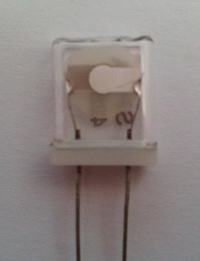Follow along with the video below to see how to install our site as a web app on your home screen.
Note: This feature may not be available in some browsers.






That's not quite right, but close. The quartz itself does not have a connection and the two connections are not an anode and a cathode (which inplies a polarity) but electrodes bonded to the quartz to induce movement and pick up a voltage as the crystal relaxes. The resonance is due to the mechanical properties and size of the quartz, applying a voltage across the electrodes causes a physical change in the crystal lattice and on removal of the voltage the lattice reverts to it's original position, releasing a small volatge as it does so. The critical thing is that it will only do this at a particular frequency. You can reverse the connections to a quartz crystal and it will work exactly the same.
Three pin devices are usually resonators, they work in the same way but use ceramic materials instead of quartz and are not as temperature stable. They also have lower 'Q' meaning they can be persuaded to resonate over a wider range around their design frequency. They also have two pins but as in many case they are used in microcontroller applications where the frequency may not need to be very accurate but the cost must be as low as possible. As most microcontrollers have built in oscillators that rely on an external resonantor or crystal and also need loading capacitors from each end of them, some manufacturers build the capacitors inside the resonator body, bringing their common connection (normally connected to ground) to a third pin. It's a cost saving convenience to designers.
I've attached a picture of a glass cased quartz crystal that will help to explain. Sorry it isn't very clear but it's a small crystal and taken on a mobile phone! You can just see the circular disc of quartz, almost touching the glass walls, the lighter parts are the electrodes, the back one is visible through the quartz. you can also see the tiny solder jonts where the wires are bonded to the electrodes.
Brian.



You contradict yourself by saying 5VDC constant signal. Anything DC cannot also be a signal!
The important property of quartz crystal or resonator is that it's impedance changes suddenly at resonant frequency. They actually have a peak and dip in impedance very close together in frequency and this is used either in series or parallel with a positive feedback path in an amplifier to make it prefer that frequency to oscillate at. Both quartz and ceramic resonators have other uses than in oscillators, they can be used in series or parallel to pass or reject particular frequencies. For example, in radio receivers they are commonly used to create a narrow frequency window so that only desired signal pass through and others are rejected.
Brian.


